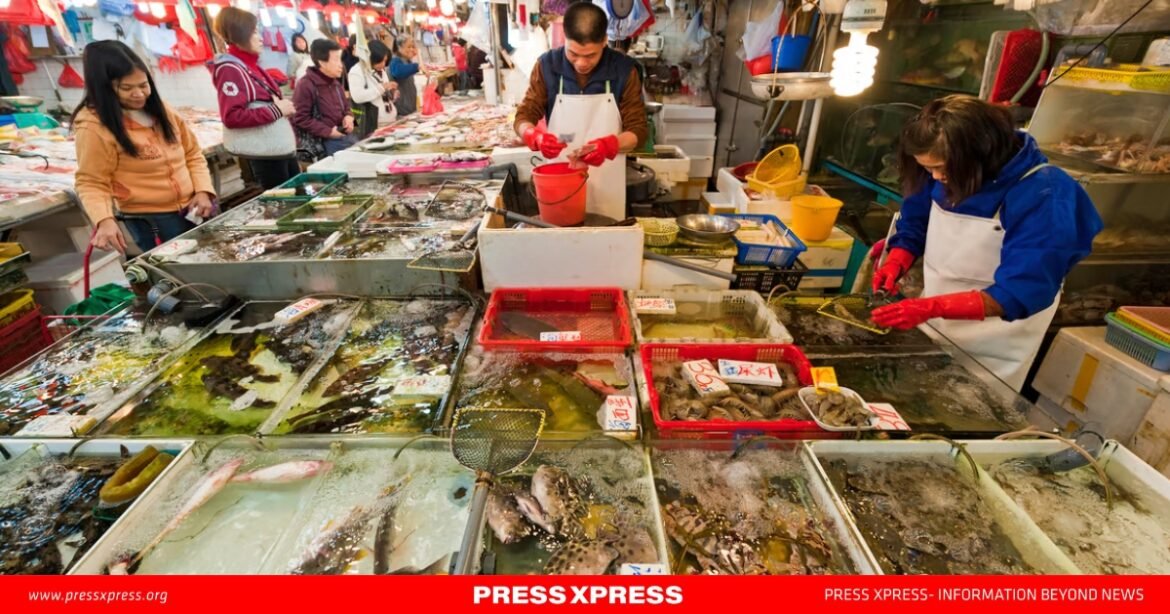China’s growing demand for farmed salmon is transforming global seafood trade. In 2023 alone, China’s salmon imports surged by 46%, with fresh and chilled Atlantic salmon imports jumping an impressive 63%. This rapid growth is forcing major exporters—including Norway, Scotland, Chile, and others—to scramble to meet demand, while China’s domestic production efforts lag behind.
Domestic Challenges and the Rise of Rainbow Trout
China has struggled to establish a viable domestic Atlantic salmon industry due to environmental and technical barriers. In response, the government in 2018 allowed rainbow trout to be marketed as salmon, offering an affordable and accessible alternative for consumers. Rainbow trout shares a similar appearance, texture, and nutritional profile with salmon, making it an appealing substitute.
According to a research titled “Consumers’ Preferences Towards Farmed Salmon in China: Integrating Sensory and Choice Experiments,” by a team from the Institute of Aquaculture at the University of Stirling, UK, reveals that Chinese consumers often cannot distinguish between imported Atlantic salmon and domestic rainbow trout in blind taste tests. However, when the origin is disclosed, preferences strongly lean toward imported salmon, underscoring the influence of provenance on consumer behavior. While appearance, taste, and smell remain critical, ecolabels indicating sustainability also sway purchasing decisions, especially among environmentally conscious buyers.
The Environmental Cost of Salmon Imports
The journey of Atlantic salmon from Norway’s fjords or Chile’s waters to Chinese markets involves complex logistics and substantial environmental costs. Long-distance transportation and energy-intensive cold-chain storage significantly increase the carbon footprint of imported salmon. Paradoxically, Chinese consumers prioritize freshness, a demand often met through rapid shipping, which exacerbates environmental harm.
E-commerce has revolutionized seafood retail in China, enabling swift delivery and catering to consumers seeking premium quality. Salmon, with its retained value when chilled or frozen, aligns well with this model. However, the sustainability of such practices remains a pressing concern, as current international certification schemes have made little headway in China.
Opportunities in Domestic Trout Farming
China’s rainbow trout production, while nascent, reached 37,000 tonnes in 2022. This volume is modest compared to global production but notable for a relatively new farmed species in the country. Trout farming in China faces geographical limitations, thriving only in cooler freshwater environments like high-altitude lakes and reservoirs. However, advances in aquaculture technology—such as recirculating systems—could expand production, offering a sustainable alternative to imports.
Developing a robust trout farming industry could address multiple challenges. It would reduce reliance on imports, enhance food security, and create rural economic opportunities, all while offering a lower-carbon option for consumers. Investments in eco-friendly practices, such as water recycling and nutrient recovery, are critical for scaling up production sustainably.
Lessons for the Global Market
China’s evolving seafood market offers a glimpse into the future of global seafood trade. Prioritizing sustainability, freshness, and quality will resonate with China’s increasingly discerning consumers. At the same time, traditional salmon exporters may need to adapt to shifting market dynamics. If domestic trout captures a significant share of the Chinese market, exporters in Europe, Canada, and elsewhere could face mounting competition, forcing them to rethink their strategies.
While China’s ambition to develop a domestic Atlantic salmon industry remains elusive, its focus on rainbow trout provides a viable pathway for growth. Balancing consumer demand with environmental responsibility will be essential as China continues to shape global seafood markets. For exporters and domestic producers alike, this is both a challenge and an opportunity to align with the values of a changing world.


